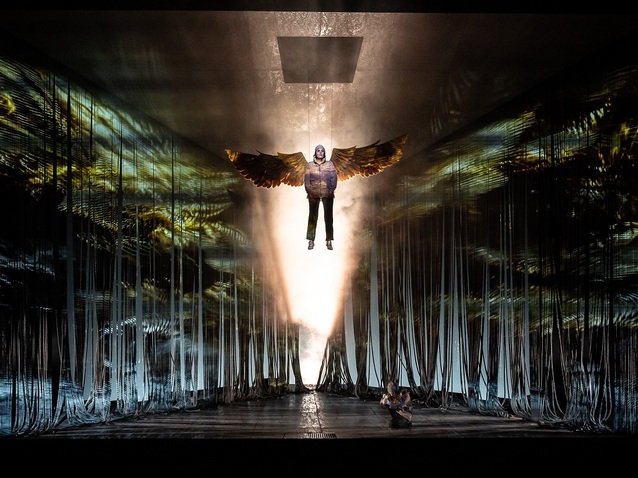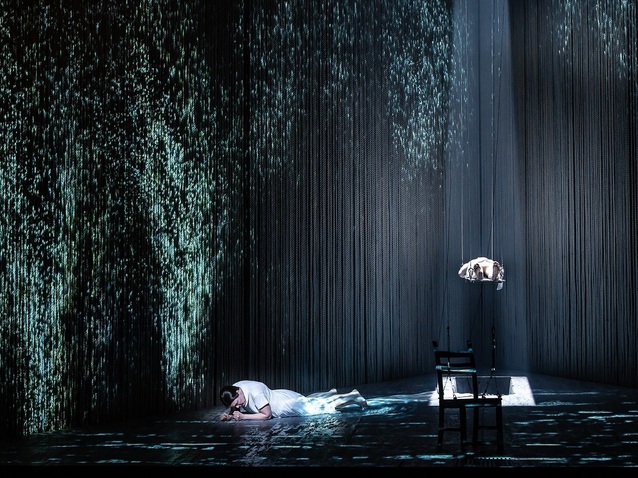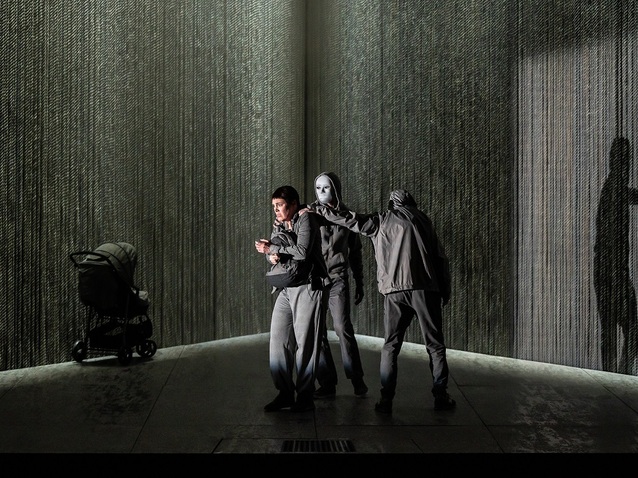 © Clive Barda
© Clive Barda
Henryk Górecki’s Symphony No. 3, Op. 36, more commonly known as the Symphony of Sorrowful Songs, premiered at the Royan International Festival on 4 April 1977. With the symphony being indicative of the transition from the composer’s earlier dissonant style to his later more tonal style, it sees a soprano sing a different Polish text during each of its three movements. The first is a fifteenth century Polish lament of Mary, mother of Jesus, while the second comes from a message written on the wall of a Gestapo cell in Zakopane in 1944 in which an eighteen-year old girl tells her mother not to weep. The third is a folk song in the dialect of the Opole region about a mother searching for the dead body of her son who has been killed in the Silesian uprisings of 1919 to 1921. In this way, the first and third movements are written from the perspective of a mother who has lost her child, while the second sees a daughter separated from her parent.
English National Opera has a long and proud tradition of staging works that are not actually operas, having presented Handel’s Messiah in 2009, Berlioz’s La damnation de Faust in 2011 and Britten’s War Requiem in 2018. This may, however, be the first time it has presented a symphony in this way, and on paper it might seem an odd choice for an opera company to select a work that involves just one singer who, even then, hardly sings continuously throughout. Nevertheless, by the same token this work provides an excellent opportunity for the English National Opera Orchestra to shine and, if the decision to stage the work might have been classed as something of a gamble, it is one that certainly pays off.

ENO's Symphony of Sorrowful Songs 2023, Nicole Chevalier © Clive Barda
The secret to Isabella Bywater’s production, which she has also designed, is not to overload the drama so that what we do see truly complements the score rather than distracts from it. In the first movement the sedate pace of the action works with the slow burning nature of the music, but there are so many telling details that the staging genuinely adds something to the symphony, which is what any needs to do in order to justify its existence.
The set reveals two lines of diagonal hanging ropes that meet at the back and thus create a triangular shaped area. These appear so solid that, when at the start projections appear on them, they simply look like walls. The first movement sees a male body suspended over a tomb while soprano Nicole Chevalier crawls across the stage dragging a shroud that proves to be extremely long. This could represent her infinite grief and, by having her move ever so slowly towards the front of the stage, her anguish seems to build at exactly same pace as the music. In the same way, projections of waves, courtesy of video designer Roberto Vitalini, that appear on the ropes skilfully swell and recede in time with the score.
When Chevalier reaches a chair at the front, she wraps the shroud up so it becomes the swaddling clothes that cradle her child, though these are then revealed to be empty showing how her son has now gone. Then she ascends on this chair, providing the opportunity for the shroud to be unfurled to its full length from the air while the body behind her is lowered into the tomb.

ENO's Symphony of Sorrowful Songs 2023, Nicole Chevalier, Ensemble © Clive Barda
At the start of the second movement, the two rows of ropes split ever so slightly at the back so that a thin shaft of light comes flooding in. As Chevalier sings those heartbreaking lines in which the girl acknowledges what grief her mother is being subjected to, we witness a pushchair that recalls happier times when she was a young child. Masked figures appear from between the ropes who could represent the oppressive face of the Gestapo, or any force in history that has caused such pain and sorrow to others. The third movement also sees ‘masks’ of a different type in the form of soldiers whose faces have been wounded and disfigured by guns or gas.
The very final bars of the second movement see the ropes separated out a little, with even the tiny sound of this happening complementing the music well. This creates a more fractured and unsettling area for the third movement, and even as the mother searches for her son we see other soldiers falling in battle, thus highlighting how universal her experience is. The golden hews that fill the stage towards the end serve the purpose of raising everything to a more spiritual plane, but there is just one accessory that seems garish when until this point the staging has triumphed by virtue of feeling so measured and understated. Nevertheless, with sublime performances from both Chevalier and the English National Opera Orchestra, conducted superbly by Lidiya Yankovskaya, this staged version of Symphony of Sorrowful Songs is deeply moving and an undoubted success.
By Sam Smith
Symphony of Sorrowful Songs | 27 April - 6 May 2023 | London Coliseum
the 28 of April, 2023 | Print
Comments